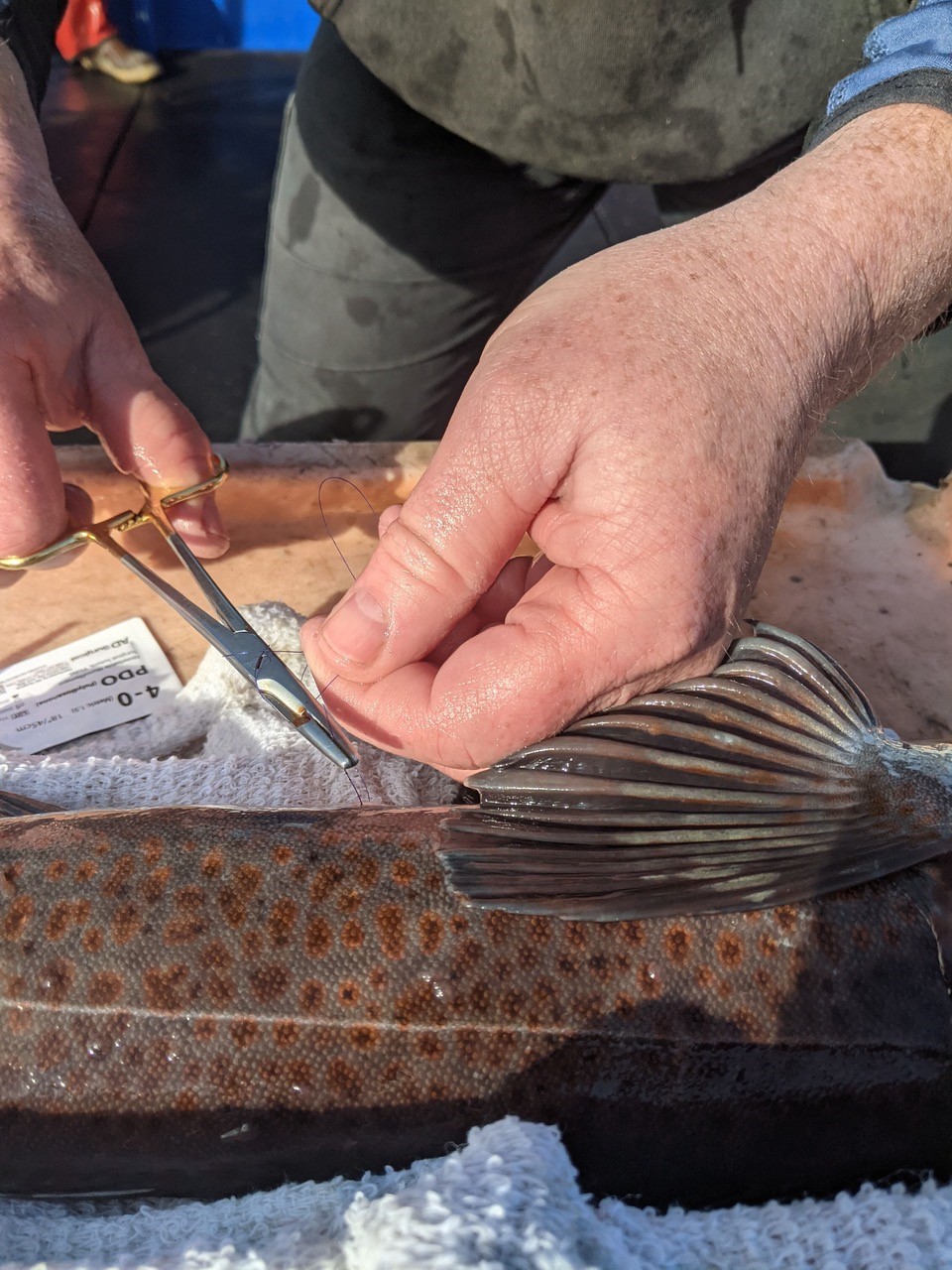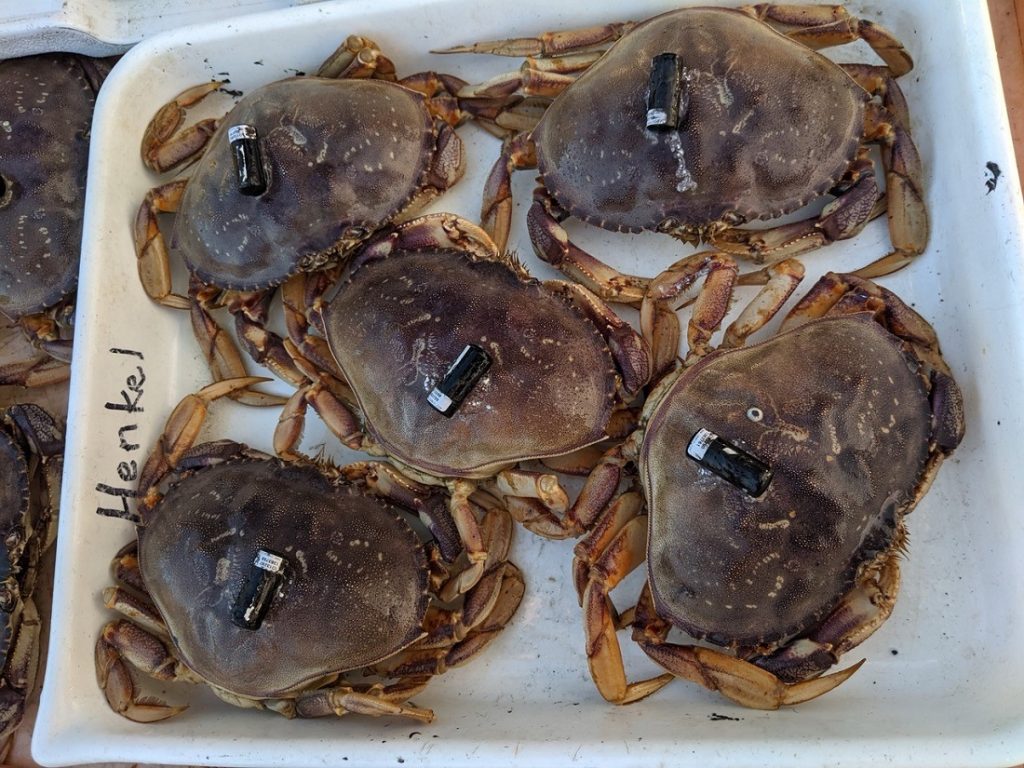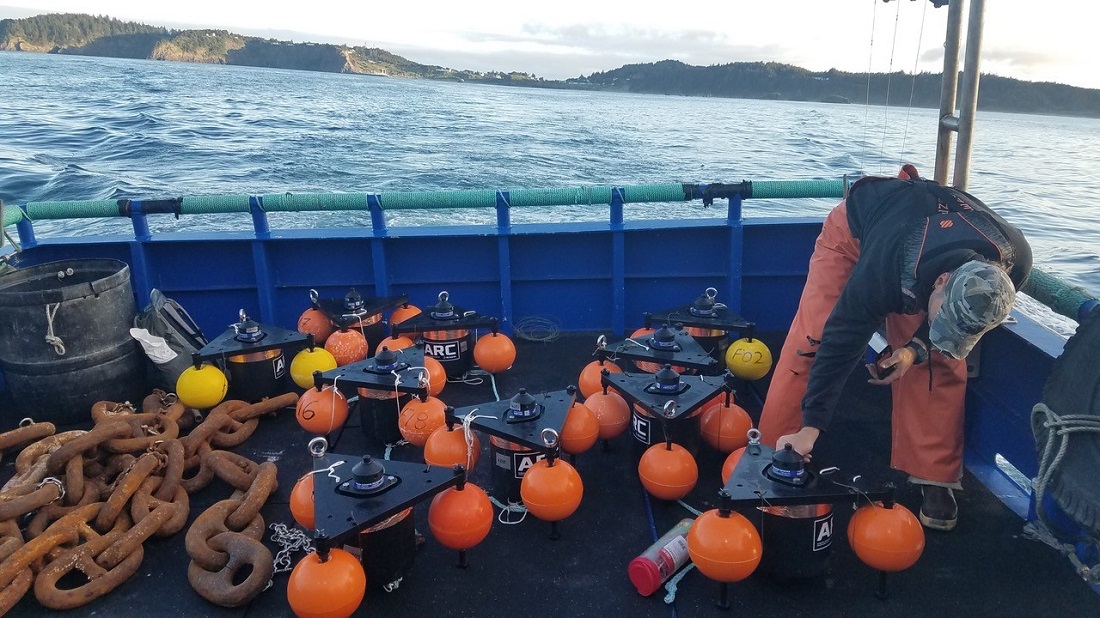Photo: A researcher on the back deck of the F/V Alice Faye, organizing moorings and acoustic receivers that will be used to track marine species response to noise produced from an NSF geological seismic survey being conducted this summer.
NEW COLLABORATIVE RESEARCH AT
REDFISH ROCKS MARINE RESERVE
Researchers from Oregon State University (OSU) are partnering with ODFW to study how marine species respond to a geological seismic survey being conducted by the National Science Foundation (NSF) this summer. The geological survey targets the Cascadia Subduction Zone, a megathrust fault off the Pacific Northwest where the Juan de Fuca plate and North American plate meet. The seismic survey is set to begin off the Oregon coast in June. The survey will use airguns to image the fault and learn more about its characteristics. While a great deal of research has focused on noise effects of these airguns on marine mammals, few studies have looked at fish responses and even fewer have looked at crustaceans, particularly in this part of the world.
TAGGING FISH AND CRAB TO TRACK THEIR
MOVEMENTS AND BEHAVIOR

In response to the seismic survey and because marine species such as rockfish, lingcod, and crabs are important members of Oregon’s nearshore ecological communities and our culture, a collaborative research project was developed by OSU and ODFW. This project aims to study the response of fish and crabs to the noise generated from the seismic survey, and is focused on the Redfish Rocks Marine Reserve (RRMR), which will receive three passes during the seismic survey. This location will allow for repetitive observations of animal responses to the airgun activity. Fish and crabs are being fitted with acoustic tags and their movements and behaviors tracked by acoustic receivers attached to moorings in the marine reserve. Oceanographic data such as temperature, salinity, and oxygen are also being collected by sensors attached to the moorings.
GRID OF ACOUSTIC RECEIVERS DEPLOYED AT REDFISH ROCKS
In early May, the grid system of moorings with acoustic receivers was deployed with the help of local fishermen out of Port Orford. In addition, researchers and fishermen on the F/V Alice Faye worked collaboratively to catch and tag 15 each of China rockfish, Black rockfish, lingcod, and female Dungeness crabs. This allows for about 3 weeks of tracking their “normal” behavior before the airgun survey vessel gets to southern Oregon. The receivers will stay out through the completion of the airgun survey (July) and another month afterward to continue to monitor their movements. At the end of the summer, the receivers will be retrieved from RRMR, the data downloaded, and analysis will begin.

Stay tuned for updates on what fish and crabs are doing in RRMR normally and in response to this important geological survey.
